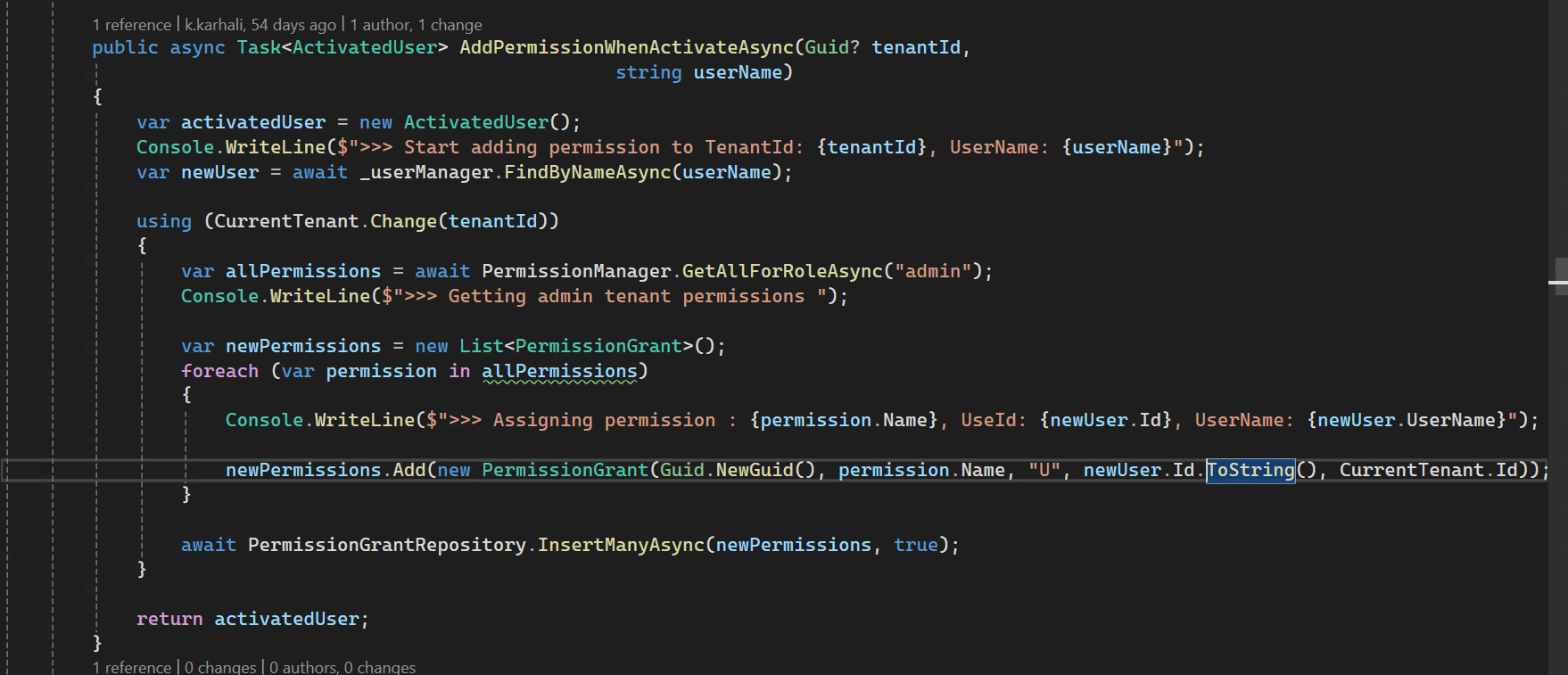I have one function that assign permission to one user using PermissionGrant repository I am facing the issue that permission added to db but when user is logged in he didn't have permission on Ui and I thinl the problem from redis cache
the image show the addPermission function
how I can reset the Cache related to one module in Abp, permission module and other modules if we faced same issue
7 Answer(s)
-
0
To reset the distributed cache related to permissions (or any ABP module) after updating permission grants in the database, you need to clear the relevant cache entries. ABP caches permission grants for performance, especially when using Redis as a distributed cache. If you update permissions directly in the database (e.g., via repository), the cache will not be automatically invalidated, and users may not see updated permissions until the cache expires or is cleared.
For the permission system, you should clear the permission grant cache for the affected user/tenant. There is no built-in ABP API to clear only one module's cache, but you can use the IDistributedCache interface to remove specific cache keys.
Example: Clear permission grant cache for a user
using Volo.Abp.Caching; using Volo.Abp.Authorization.Permissions; using Microsoft.Extensions.Caching.Distributed; // Inject IDistributedCache<PermissionGrantCacheItem> private readonly IDistributedCache<PermissionGrantCacheItem> _permissionGrantCache; public async Task ClearPermissionGrantCacheAsync(string providerName, string providerKey, string permissionName, Guid? tenantId) { var cacheKey = PermissionGrantCacheItem.CalculateCacheKey(permissionName, providerName, providerKey, tenantId); await _permissionGrantCache.RemoveAsync(cacheKey); }- providerName: "U" for user, "R" for role
- providerKey: userId.ToString() or roleName
- permissionName: the permission name
- tenantId: the tenant's ID
Call this method after you update the permission grants in the database.
For other modules, you can use the same approach: identify the cache key and remove it using IDistributedCache.
Note: If you want to clear all permission grants cache, you may need to clear all related keys in Redis, but this is not recommended in production unless necessary.
Sources:
- https://abp.io/docs/latest/tutorials/book-store/part-05
- https://abp.io/support/questions/9767
- https://abp.io/support/questions/9649
This response was generated by AI. If it didn’t solve your problem, feel free to post a new answer — our support team will jump in to help you soon.
-
0
This is remove, but when I added to repository it is a new permission but not reflected after the user logged in
-
0
hi
Can you grant permissions through the
PermissionManagerservice?It will manage the cache internally.
Thanks.
-
0
We need to deal with low level (Repository level) for performance issue
this is an issue when deal with available repository the system not updated the cache so we need the name of cache related with permission module to reset it
-
0
hi
but when I added to repository it is a new permission
Can you share your code?
Which provider did you add the new permissions to?
User or Role?
Thanks.
-
0
-
0
hi
Try to inject
IDistributedCache<PermissionGrantCacheItem>service.Then remove the cache keys, the key is calculate by
PermissionGrantCacheItem.CalculateCacheKey(name, providerName, providerKey);Name is permission name providerName is
UorRproviderKey is UserId or RoleNameThanks.



























































